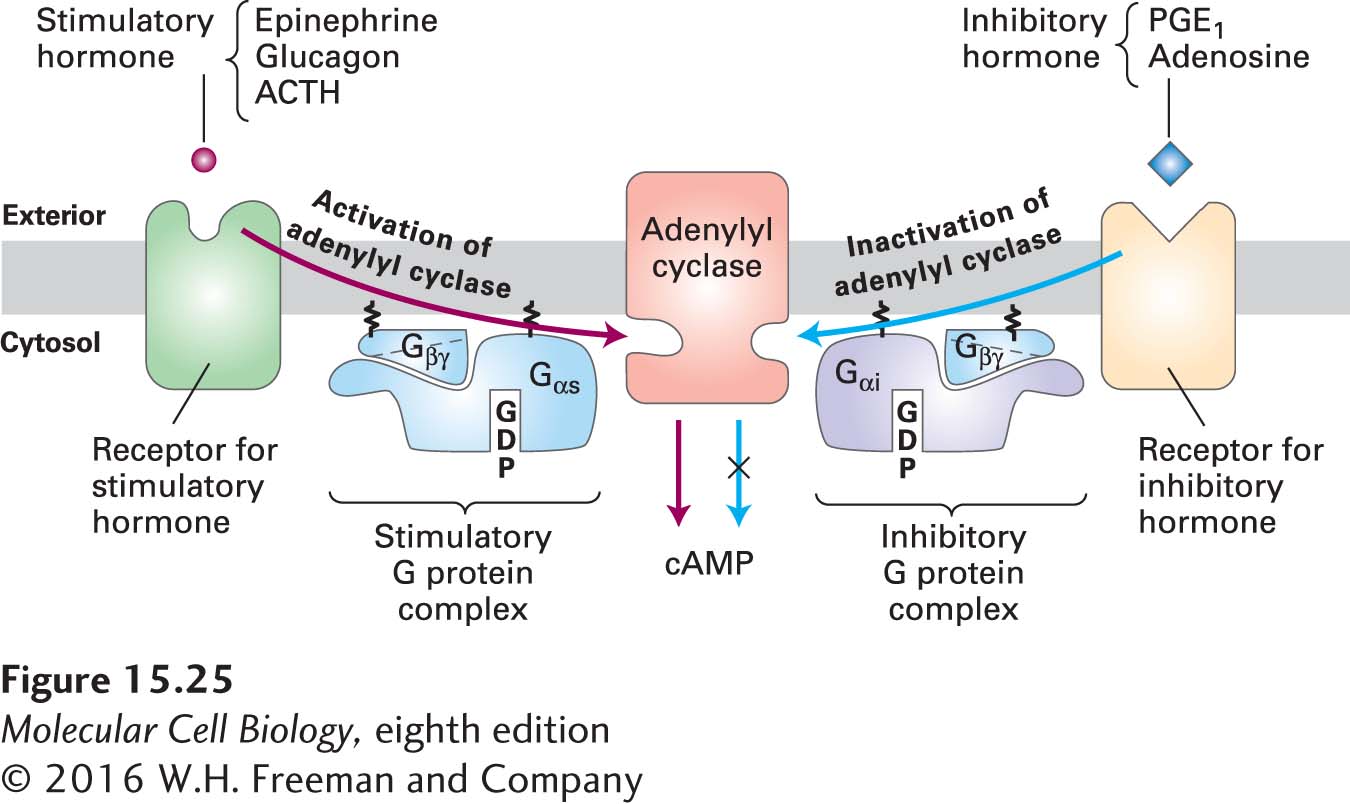Adenylyl Cyclase Is Stimulated and Inhibited by Different Receptor-Ligand Complexes
Under conditions where body demand for glucose is high, such as low blood sugar, glucagon is released by the α cells of the pancreatic islets; in case of sudden danger, epinephrine is released by the adrenal glands. Both glucagon and epinephrine signal liver and muscle cells to depolymerize glycogen, releasing individual glucose molecules. In the liver, glucagon and epinephrine bind to different G protein–coupled receptors, but both receptors interact with and activate the same stimulatory Gαs protein, which activates adenylyl cyclase (Figure 15-25). Hence both hormones induce the same metabolic responses. Activation of adenylyl cyclase, and thus the increase in the cAMP level, is proportional to the total concentration of Gαs·GTP resulting from the binding of each hormone to its respective receptor.

FIGURE 15-25 Hormone-induced activation and inhibition of adenylyl cyclase in adipose cells. Ligand binding to Gαs-coupled receptors causes activation of adenylyl cyclase, whereas ligand binding to Gαi-coupled receptors causes inhibition of the enzyme. The Gβγ subunit in stimulatory and in inhibitory G proteins is identical; the Gα subunits and their corresponding receptors differ. Ligand-stimulated formation of active Gα·GTP complexes occurs by the same mechanism in both Gαs and Gαi proteins (see Figure 15-14). However, Gαs·GTP and Gαi·GTP interact differently with adenylyl cyclase, so that one stimulates and the other inhibits its catalytic activity. See A. G. Gilman, 1984, Cell 36:577.
Positive (activation) and negative (inhibition) regulation of adenylyl cyclase activity occurs in many cell types, providing fine-tuned control of the cAMP level and thus of the downstream cellular response (see Figure 15-25). For example, in adipose cells, the breakdown of triacylglycerols (page 49) to fatty acids and glycerol (lipolysis) for use as a fuel by other body cells is stimulated by binding of epinephrine, glucagon, or adrenocorticotropic hormone (ACTH) to distinct GPCRs, all of which activate Gαs and thus activate adenylyl cyclase. Conversely, binding of two other hormones, prostaglandin E1 (PGE1) and adenosine, to their respective G protein–coupled receptors inhibits adenylyl cyclase. The prostaglandin and adenosine receptors activate an inhibitory Gi protein that contains a different α subunit (Gαi). After the active Gαi·GTP complex dissociates from Gβγ, it binds to and inhibits (rather than stimulates) adenylyl cyclase, resulting in lower cAMP levels.
